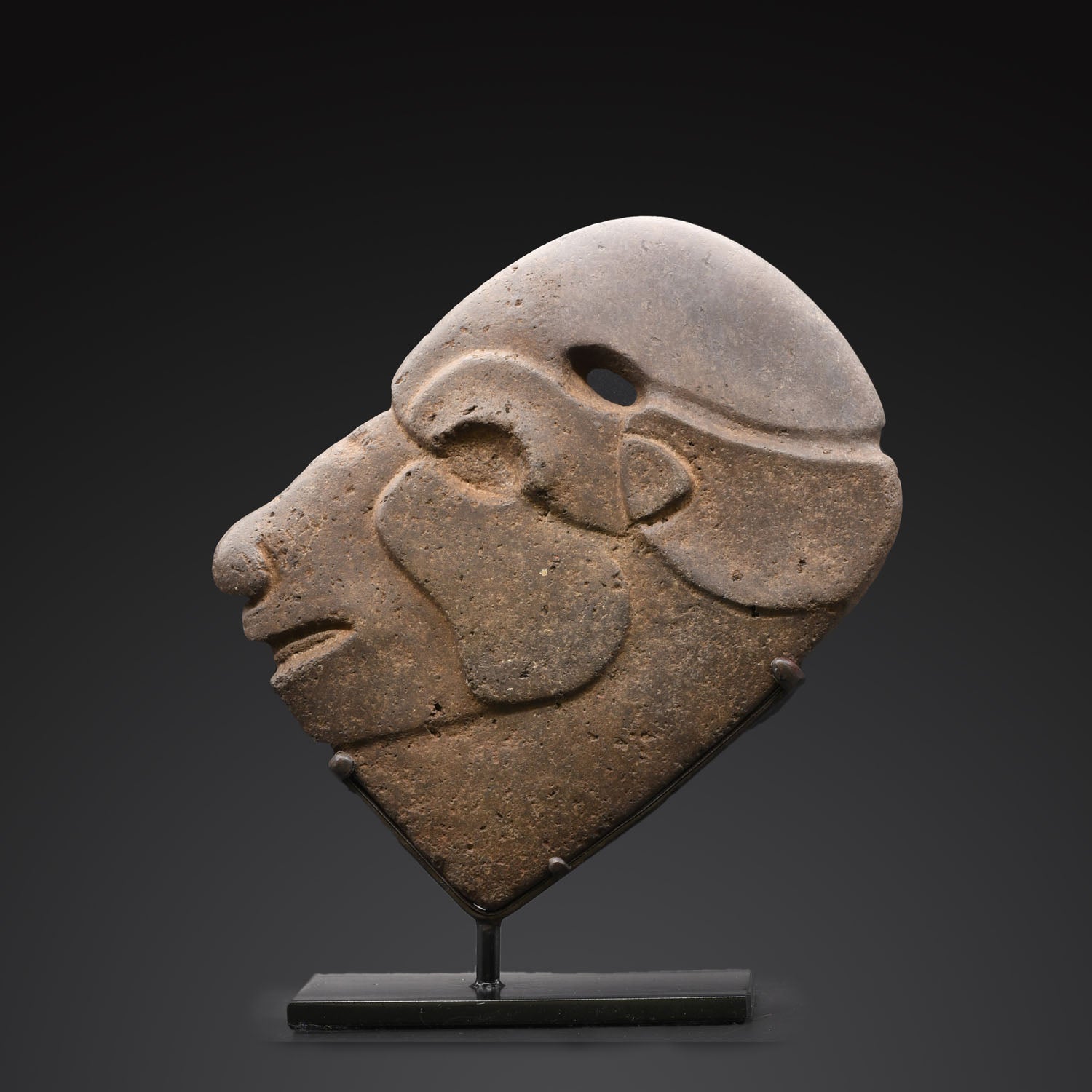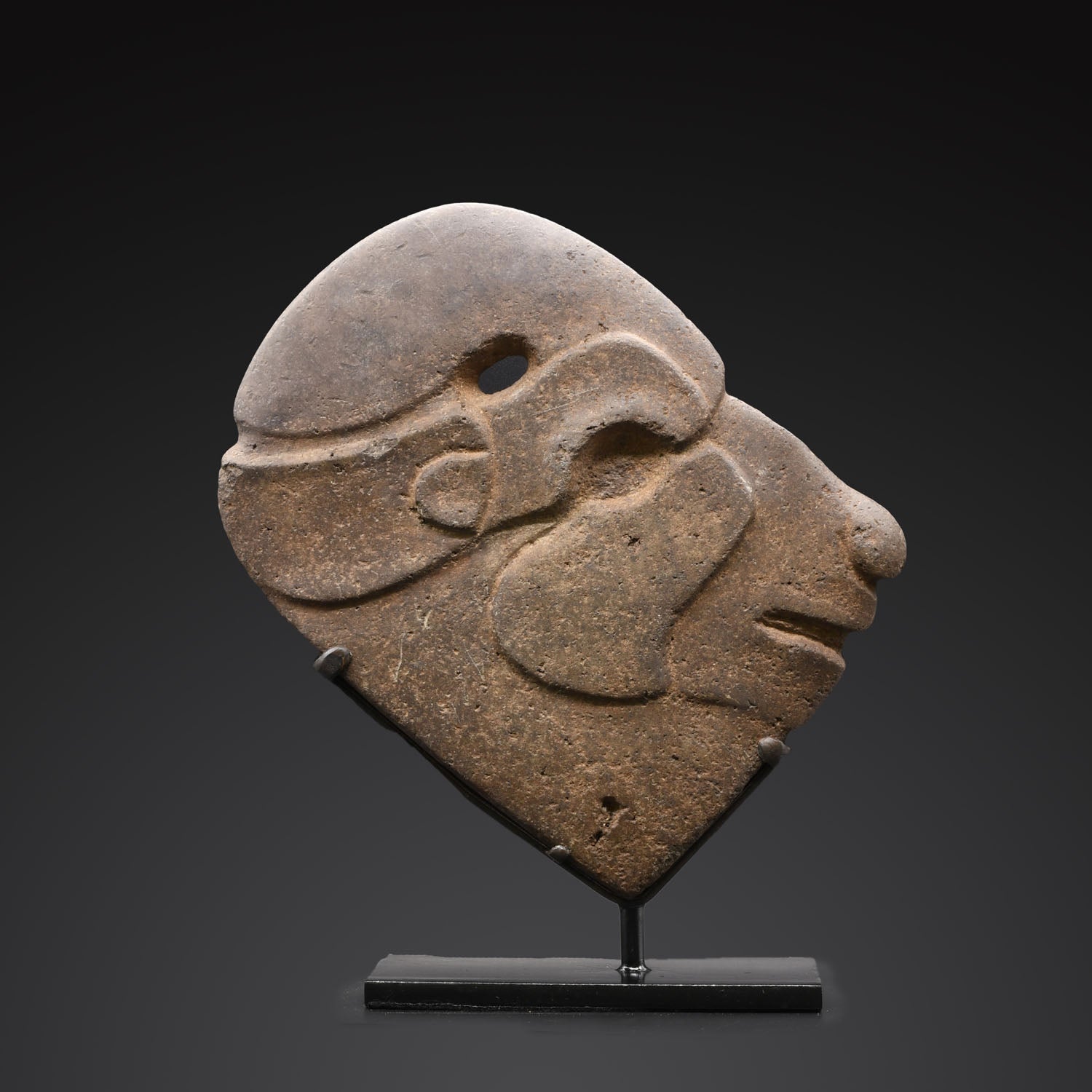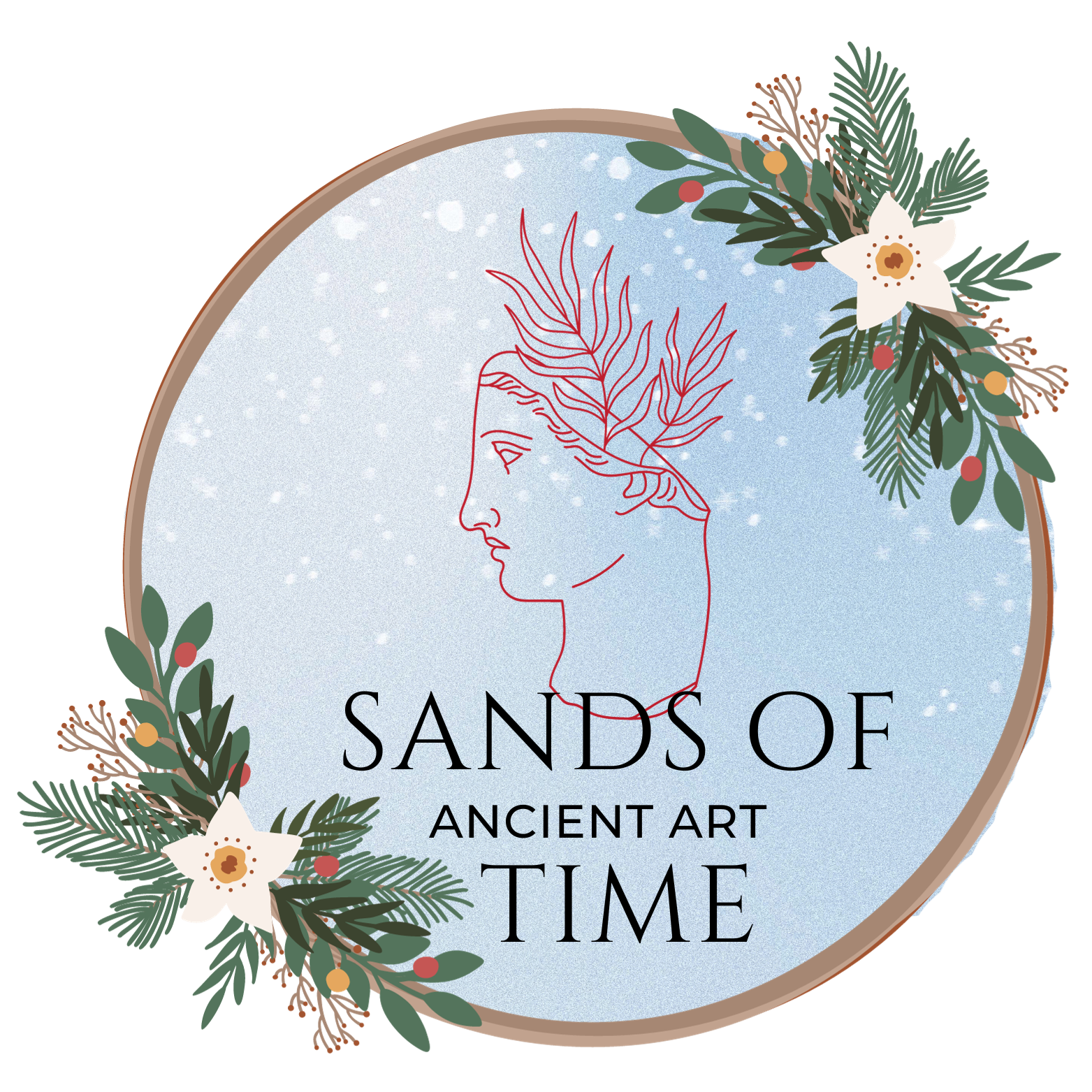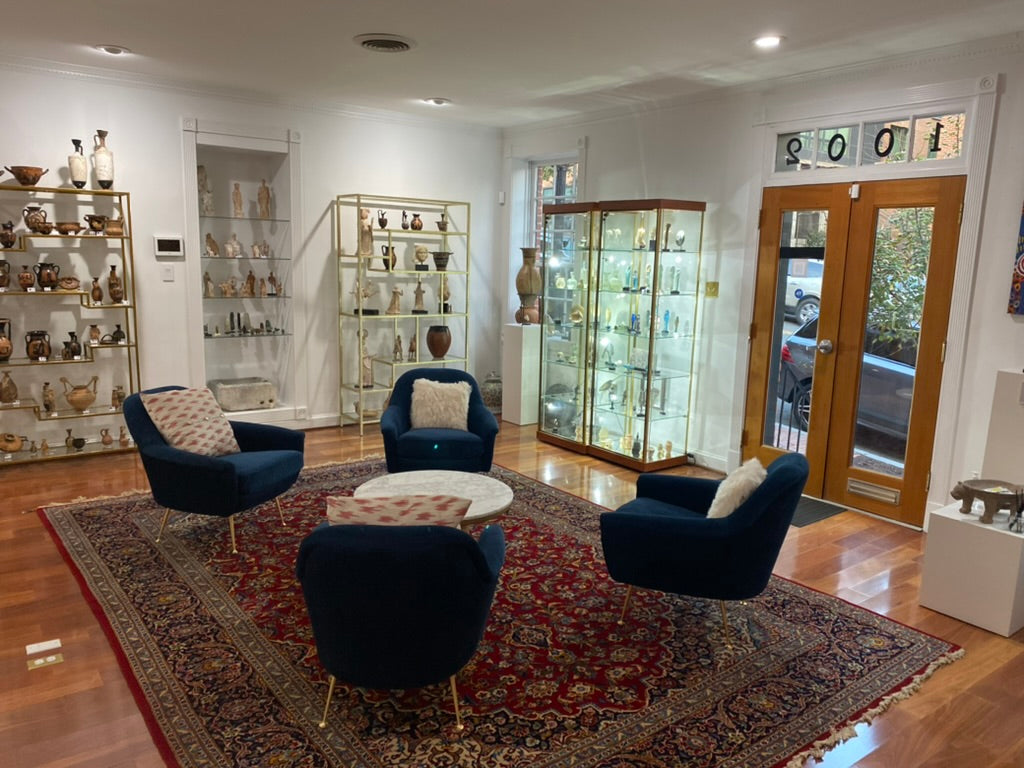

A Mayan Stone Deer Hacha, ca. 500 - 800 CE
This object is currently reserved. Contact us for more info.
Here, as with almost all deer hacha, the animal is shown in profile with a long face and strong jaw, the tip of the nose is rounded, the delicate lips are slightly open, although, unlike actual deer, the ears are short and round. Care has been taken with the eyes, for the sockets are deeply carved with raised orbital plates that divide sharply with a front grove representing the gland of the deer's eye. A single stabilizing perforation is at the base of the crest, and the neck recesses subtly to create an area to allow the trophy to sit within a notch on a temple or monument. Carved in a dense deep gray basalt, the sculpture holds a strong surface polish and patina.
Mesoamerican ballplayers wore protective gear called hachas, palmas, and yokes to protect their hips and abdomens from the impact of the game’s solid rubber ball. In painting and sculpture, the yoke is shown worn around the player’s hips, the palma or hacha attached at the front. Those used during active play were most likely made of wood or some other light material; stone versions such as this one were worn, if at all, during ballgame-related rituals, or placed on display. Given the distinctive design of each hacha, both those worn and those carved in stone may have served to identify teams or individuals.
The name hacha refers to the axe-like form of many (hacha is Spanish for axe), including the example seen here. In these, the back is slightly wider than the front where the sides converge in a sharp point. Facial features and any other details are carved on low relief, each side a mirror image of the other.
Condition: Overall slightly encrusted surface patina. Two very minor surface flakes, horn crest restored, otherwise intact.
Dimensions: Height: 10 1/2 inches (26.5 cm), Width: 7 1/2 inches (19 cm)
Provenance: Private FL. physicians collection, acquired from George Martinez, 12/1/03, who acquired it in the 1950s, incudes copy of provenance letter from George Martinez.
We ship Tuesday to Friday with FedEx and usually same day if your order is received before 2pm. Within the continental USA, packing, shipping and insurance is free. Depending on size and destination, delivery times range from one to five business days.
For overseas shipments we charge a small flat rate which includes packing, preparation of all customs paperwork, insurance and carrier fees in compliance with all USA and International customs requirements. Overseas shipments are sent using either USPS Priority Mail or FedEx but contact us if you have a shipping preference. International customers are responsible for all duties and taxes.
Sands of Time provides a lifetime, unconditional guarantee of authenticity and provenance. Every object you purchase from us is accompanied by a Certificate of Authenticity, stating culture, provenance, and age.
Furthermore, we conduct due diligence to ensure the item, to the best of our knowledge, has not been illegally obtained from an excavation, architectural monument, public institution, or private property. Wherever possible, reference is made to existing collections or publications.Wherever possible, reference is made to existing collections or publications.
Choose options





